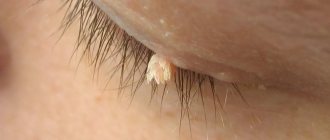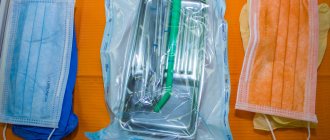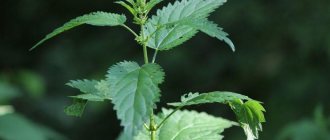Synovitis of the knee joint is characterized by inflammation of the inner layer of the articular surface, as a result of which excess fluid accumulates in it. The main cause of the disease may be injury, allergic manifestations, age-related changes, or arthritis. An exudative component can occur without visible damage to the knee - due to a sprain or as a result of joint instability.
Related articles:
Treatment of synovitis of the ankle joint Let's find out all about the symptoms and treatment of synovitis of the knee joint Dealing with pain in a bunion How to properly massage for flat feet in children Which doctor prescribes treatment for arthritis?
The main symptom of synovitis is a sharp increase in the knee joint, pain, decreased motor function, and increased temperature.
Important! When an infection enters the joint cavity through the bloodstream, purulent synovitis can develop.
Therapy methods
Treatment must be comprehensive, taking into account the cause, severity of development and nature of the disease. To eliminate inflammation, specialists take measures to identify the cause of the effusion (fluid), as well as relieve pain and restore motor function of the knee.
In the chronic form of the disease, pathological changes in the cartilage tissue and joint deformation are possible, so therapy should be immediate. Doctors prescribe conservative treatment, which includes: pathogenetic therapy, restorative exercise and physiotherapy.
Surgical intervention is carried out as a last resort: if there is a threat to the patient’s life or there is no positive effect of drug treatment. Complementary and alternative treatments are used to speed recovery :
- taking special medications;
- stabilization of a sore joint;
- taking vitamin and mineral complexes;
- folk remedies.
Causes
The development of synovitis can be caused by many factors, which are divided into 3 groups:
- infectious – damage to the joint by invading bacteria;
- non-infectious - the inflammatory process affecting the synovial membrane occurs without the participation of microorganisms;
- traumatic.
Since the cause of the disease influences the choice of its treatment, a more detailed classification is used in clinical practice:
| Form of synovitis | Reason for development |
| Acute infectious synovitis | Bacteria entering the synovial membrane. It can be observed:
The spread of infection through the lymphatic and circulatory routes is quite rare. |
| Acute traumatic synovitis | Damage to the joint that injures the synovial membrane. There are 2 types of injuries:
|
| Chronic synovitis | It is observed in cases of metabolic disorders or chronic joint diseases. This form is characteristic of the following diseases:
|
| Villonodular (villonodular, pigmented) synovitis | A rare form of tumor where the growth of synovial membrane cells occurs. The cause of the development of this form of the disease has not yet been established. |
| Migratory synovitis | Develops against the background of rheumatic fever. |
If it is not possible to accurately name the cause of the disease, doctors indicate in the medical history the diagnosis “unspecified synovitis.”
Primary stage of treatment
To ensure complete rest, a stabilizing bandage or knee brace is applied to the inflamed area of the knee joint for 5–7 days. In more serious cases, it is possible to support the sore spot with a splint. The patient is recommended to undergo a course of hypothermia - cold treatment - in the first days.
Attention! Long-term immobilization (the immobility method) can lead to complications, such as joint stiffness.
Types and symptoms
According to the etiology of origin, there are 3 types of synovitis:
- aseptic – not associated with infection, occurs against the background of injury, impaired metabolism, etc.;
- infectious – caused by specific or non-specific infectious agents;
- allergic.
The infectious form is accompanied by a vivid clinical picture. The body temperature rises to febrile levels, the inguinal lymph nodes enlarge, mobility is limited to the point of impossibility of performing flexion-extension movements, the pain is acute. Symptoms of general intoxication appear (weakness, headache, nausea and vomiting).
Synovitis can also be serous (the effusion changes color from transparent to cloudy), serous-fibrous (has a yellow tint), hemorrhagic (fluid mixed with blood) and purulent (contains an admixture of pus).
Varieties according to the cause of occurrence:
- Reactive synovitis of the knee joint. This is an allergic form that can also appear with knee diseases (arthritis, arthrosis). Symptoms develop against the background of exposure to a mechanical or toxic stimulus. Treatment of reactive synovitis of the knee joint should be aimed at eliminating the allergen.
- Post-traumatic synovitis of the knee joint. Caused by mechanical damage to the knee. Therapy for post-traumatic synovitis of the knee joint should begin with the elimination of the inflammatory process and the cause that caused it.
- Exudative synovitis of the knee joint. It is also a consequence of a knee injury. Exudative synovitis of the knee joint is characterized by the accumulation of a huge amount of exudate, which leads to the development of inflammation. The consequence is stretching of the joint capsule, the severity of pain even at rest.
Depending on the number of joints involved in the pathological process, there is bilateral and unilateral synovitis of the knee joint.
Regardless of the origin of the inflammatory process, the general symptoms are:
- aching dull pain that appears mainly during movement;
- increase in the size of the knee joint;
- swelling, redness of the skin;
- decreased mobility of the joint, and in some cases even its immobility;
- increase in body temperature.
Suprapatellar synovitis of the knee joint is characterized by damage to the suprapatellar sac (upper part of the knee). A feature of the disease is swelling and swelling over the joint.
Drug therapy
Effective treatment methods include taking special medications that reduce inflammation. They can be divided into several groups:
Nonsteroidal drugs
Available in the form of tablets, injections, ointments. Sometimes rectal suppositories are prescribed, which reduce the load on the gastrointestinal tract. The following drugs are used at home: analgin, ketonal, diclac. It is recommended to lubricate the sore spot externally with ointment: diclofenac, ketonal, voltaren, indomethacin.
Proteolytic enzyme inhibitors
Prescribed for the chronic course of the disease, accompanied by a large amount of effusion and infiltration of articular tissue.
Important! Chronic synovitis of the knee joint over time can develop into a more serious form: deforming arthrosis, if the examination is not carried out in time and the correct treatment is prescribed.
Corticosteroids (steroid hormones)
They are injected into the affected joint tissue in severe or advanced cases of the disease. These may be: Kenalog 40, hydrocortisone, dexazone and others.
Regulators of microcirculation - nicotinic acid, ATP, thiatriazoline.
Antibiotics
They are introduced into the joint cavity to suppress the growth and reproduction of infection, as well as to confirm the bacterial origin of synovitis. Treatment with antibiotics can last no more than 10 days.
Important! It is not recommended to take medications on your own! For a quick recovery and proper treatment, you need to consult a specialist.
External methods of struggle
Cabbage leaf on the knee for the treatment of synovitis
Treatment of synovitis of the knee joint with folk remedies is no less effective than a conservative method of therapy. Traditional medicine is based on natural ingredients, namely medicinal herbs, berries, vegetables and other ingredients that can effectively combat severe symptoms and suppress further progression of pathology.
The most common means of treating synovitis are decoctions, infusions, compresses, lotions, rubbing and homemade ointments.
Cabbage leaf
Cabbage leaf is often used for synovitis of the knee joint. This is explained by the high healing properties of this recipe. Thanks to the vegetable, it is possible to successfully cope with inflammatory processes, reduce pain and improve the general well-being of the patient. Cabbage leaf is used as a compress for synovitis.
Bay leaf
It is believed that bay leaves are a real storehouse of vitamins and nutrients. It has pronounced analgesic, anti-inflammatory, and antimicrobial properties. For synovitis of the knee joint, bay leaf is used to prepare tinctures or solutions for lotions, foot baths or rubs, and it is also used to prepare decoctions and infusions for oral administration.
Herbal collection
Compress on the knee
A complex effect on the degenerative process in the knee joint is the use of medicinal plants. They help restore vitality, replenish the body's deficiencies in vitamins and nutrients, and have a beneficial effect on the structure and condition of joints and cartilage.
You can prepare any folk remedies from herbs: decoctions, infusions, solutions, tinctures. The most effective are chamomile, calendula, birch leaves, nettle and willow bark. Such natural ingredients have a good anti-inflammatory effect, help normalize blood circulation, metabolic processes and eliminate pain. They are prepared both on the basis of water and with the help of alcohol-containing drinks.
Egg compress
You can treat synovitis of the knee with the help of an ordinary chicken egg, which makes an effective compress. To reduce symptoms and recovery, beat an egg with a fork, add a little salt and apply to the sore knee. Cover the top with a bandage and leave for 30 minutes. Afterwards the compress is washed off with warm water.
Traditional methods of treating synovitis of the knee joint in no case can do without the use of ointments. Since such remedies act directly on the diseased area and help suppress symptoms more effectively.
Comfrey is used in folk medicine for many diseases. This plant has gained great popularity because it has a pronounced anti-inflammatory property, also has pain relief and reduces swelling of soft tissues.
To prepare an ointment at home from comfrey, you will need: chop the herb, place it in a container and add 200 grams of lard, previously cut into cubes. The resulting ingredients are mixed and left for 5 days. Afterwards the ointment is placed in the refrigerator. Use the product 2 times a day, rubbing thoroughly into the knee area.
Ice with salt
Ice and salt against knee synovitis
A popular treatment for knee synovitis is the use of salt ice. This remedy helps relieve swelling, pain and improves the patient’s well-being. To prepare the recipe, you need to dissolve 4 tablespoons of salt in 1 liter of water. The resulting liquid is poured into molds to set ice and placed in the freezer.
For further treatment, ice is used by applying it to the affected area. Afterwards, wrap the knee well with a shawl or other warm cloth for 4 hours. For recovery, it is advisable to carry out this procedure regularly until the clear signs of pathology disappear.
Rye decoction
It also has irreplaceable healing properties in the development of synovitis. To prepare a miraculous recipe, you need to pour ½ cup of rye with clean water and boil over a fire for several minutes.
Treatment should not be aimed only at relieving symptoms; it is very important to eradicate the cause itself. Treatment must be comprehensive and consist of the following measures:
- Therapy to strengthen the body as a whole.
- Elimination of factors that provoked joint injury and fluid accumulation in it.
- Treatment of knee dysfunction.
- Therapy with necessary medications.
- Rehabilitation therapy.
- Physiotherapeutic sessions for recovery.
- Exercise therapy.
We invite you to read: Dupuytren's contracture: treatment with folk remedies, reviews of the results. Dupuytren's contracture: treatment without surgery
For acute synovitis, use a cold compress on the knee at home - this can be a bottle of frozen water or a bag of ice. It is very important to follow your doctor's instructions. Then healing will come faster, and unpleasant symptoms will no longer torment you.
Synovitis of the knee joint can be cured with the following medications:
- The doctor prescribes NSAIDs: Nise, Nimesil, Diclofenac, Ketanov. These medications help block pain and also reduce inflammation.
- Preparations for topical use with non-steroidal anti-inflammatory substances: Diclofenac, Voltaren, Indovazin, Nise gel.
- Proteolytic enzyme blockers - Gordox, Trasylol. Substances are injected directly into the joint cavity.
- Glucocorticosteroid drugs (Kenalog-40, Dexamethasone) are also used. Such strong drugs are used in serious stages of the disease, and they are also injected directly into the knee joint.
- Antibiotics are prescribed for purulent synovitis or to prevent secondary infection.
- Products that improve blood microcirculation, metabolic processes, and vitamin complexes: nicotinic acid, ATP, Thiotriazoline.
- Various alternative medicines.
In addition, the treating doctor may prescribe and perform a puncture of the knee joint to pump out accumulated fluid. This is a very important point, since after the procedure the condition will improve and some relief will come.
In addition to recipes for internal use, there is treatment for synovitis of the knee joint with folk remedies for external use:
- Rub on bay leaf. It is necessary to prepare 250 ml of olive or sunflower oil, add ground bay tree leaves - about 20 g. The oil is infused for 7 days in a dark place. Then rub the sore knee with this mixture three times a day.
- Egg compress. To do this, thoroughly beat one egg with salt and apply the resulting product to the knee. Wrap with a regular bandage and hold for about 30 minutes. Then wash off with water.
- Comfrey ointment will help cure synovitis of the knee joint. It is considered a very effective remedy for topical use during the treatment of the inflammatory process. The product is effective for the rapid regeneration of cartilage tissue. To get the ointment, you need to take 200 g of pork fat and a glass of fresh crushed comfrey herb. The ingredients are mixed and left for 5 days in a cool, dark place. The resulting product is applied several times a day under the bandage.
- Garlic infusion. Take 100 g lemon, 200 g garlic, one celery root. All components are finely ground, mixed in a container, pour 3 liters of boiled water, and leave for 3 hours. You need to take the medicine 60 ml three times a day. The course of treatment is 30 days.
- Salty ice. A very popular remedy. For this method you need to dissolve 4 tbsp in 1 liter of water. l. table salt. Pour the solution into ice cube trays and place in the freezer for sufficient time to freeze. The resulting ice cubes are applied to the painful area, when the ice melts, you need to wrap your knee in a woolen cloth and wait 4 hours. Perform this procedure daily until the condition improves.
Recovery will come quickly, the main thing is not to let the disease progress, which can lead to a surgical decision.
Synovitis of the knee joint is characterized by inflammation of the inner layer of the articular surface, as a result of which excess fluid accumulates in it. The main cause of the disease may be injury, allergic manifestations, age-related changes, or arthritis. An exudative component can occur without visible damage to the knee - due to a sprain or as a result of joint instability.
Folk remedies - treatment at home
To relieve symptoms and speed up the treatment process for synovitis of the knee joint, in combination with traditional methods of therapy, traditional medicine becomes a reliable assistant
Important! “Grandma’s remedies” are not able to completely cope with the disease. They are used only with the consent of the attending physician.
The cause of synovitis can be an allergy, and some herbs contribute to this manifestation. Before starting treatment, it is necessary to undergo a complete medical examination to make an accurate diagnosis.
There are several folk remedies that have proven to be most effective:
Salty ice
- To prepare it, dissolve 4 tbsp in 1 liter of water. l. salt (can be sea salt), pour into molds and place in the freezer until completely frozen.
- The required number of ice cubes (depending on the size of the inflammation) is applied to the joint.
- The resulting melt water is not wiped off, but the knee is wrapped in a woolen scarf for 3–4 hours.
The procedure must be performed daily until the effect is achieved.
Comfrey
A perennial plant that has anti-inflammatory, antimicrobial, and wound healing properties. Decoctions and infusions reduce pain, relieve inflammation, and promote rapid healing.
Ointment
A glass of chopped herbs is mixed with 200 gr. lard (twist in a meat grinder) and leave for a week in a cold place. The resulting ointment is applied to the damaged area 2 times a day.
Infusion for oral administration
150 gr. crushed roots are poured in 500 g. vodka and leave for two weeks in a cool place. Take 1 tsp. before eating.
Decoction
1 tbsp. l. Pour the ground leaves into a thermos and steam with a glass of boiling water. Strain the cooled broth and divide into 2 servings, each of which should be drunk before meals for a month. The product can be used as a compress.
Infusion of a mixture of herbs
- mix crushed herbs in equal quantities: thyme, oregano, yarrow, mistletoe, echinacea, tansy, as well as birch leaves and walnuts;
- 1 tbsp. l. herbs are poured with 2 cups of boiling water and left for about an hour.
The resulting decoction is filtered and drunk throughout the day in equal portions.
Bay leaf
Bay leaf is a powerful antiseptic, has anti-inflammatory, antimicrobial, analgesic properties, and is capable of removing waste substances from the body. Taken externally as baths, rubdowns, and internally as decoctions and infusions.
Homemade spice oil
2 tbsp. crushed bay leaf, pour a glass of oil (vegetable, olive, corn, palm) and leave in a dark place for 7 days. Use only as a rubbing, combined with massage of the sore spot.
Decoction
Boil 10 g bay leaf for 5 minutes. in 300 ml of water. Remove the pan from the heat, cover well with a blanket and leave to steep for 3 hours. Strain the resulting decoction and drink completely before bed. The product must be prepared daily, as the healing properties disappear the next day. Course of treatment: 3 days, 7 days – break, 3 days again taking the decoction. It is recommended to repeat it after a year.
Black Walnut Tincture
It is believed that helminths aggravate the patient's condition. To cleanse the body of parasites, black walnut tincture is used - an effective antiparasitic, anti-inflammatory, and tonic. In addition, it is a powerful antioxidant and immunostimulant that cleanses the blood and fights various types of infections.
Take the medicine 1 tsp/3 times a day before meals. The course of treatment is 2–3 weeks, depending on the severity of the disease.
Folk remedies are quite accessible; you can prepare them yourself at home without much effort.
Attention! Due to the strong biological activity of medicinal plants, incompatibility with prescribed medications is possible. Before taking folk remedies, you should consult a specialist.
Synovitis of the knee joint is a disease that can be treated, but for a complete recovery you need to spend a lot of effort and patience, and also fully follow all the recommendations of your doctor.
Comfrey for synovitis
A plant such as comfrey has unique properties, thanks to which it can be used to prepare infusions of decoctions that will help a patient with synovitis of the knee. Substances in comfrey can accelerate the regeneration of bone and cartilage tissue. The recipe and dosage for use will vary depending on what ailment the person is suffering from.
DETAILS: Inflammation of the elbow ligaments
To prepare a comfrey-based tincture, you will need half a glass of the root of this plant. The root must first be crushed. The entire volume of raw materials is filled with 1 liter of vodka. The product should sit for a couple of weeks. It is best if it is kept in a cool and dark place. When the tincture is ready, the patient should drink 1 spoon of this remedy 3 times a day before meals. Then it is better to drink the product with clean water.
You can prepare a decoction based on comfrey. The raw materials are poured with boiling water. It is best to use a thermos. The product should sit for 1 hour. Then you need to drink the drink gradually throughout the day. You need to drink in equal shares. The course of treatment using the decoction is one month.
A decoction and infusion based on comfrey can be used for compresses. It is better to carry out such therapy every day. A sterile bandage is folded into several layers and soaked in a decoction or infusion. Then the bandage is applied to the sore spot for a while.
You can also prepare an ointment based on comfrey. It will help eliminate the symptoms of the disease. First, you need to collect the plucked leaves of the plant and wash them thoroughly. After drying, the leaves need to be cut or thoroughly crushed. For the ointment you will need a glass of this ingredient. Then the chopped leaves are mixed with lard.
It can be used only after 5 days. The ointment should be rubbed into the sore spot near the joint. A small dose of this substance will be needed to eliminate the symptoms of the disease. After the product has been applied, the joint must be wrapped with an elastic bandage and thereby secure it. It is better not to move while the ointment is absorbed.
Comfrey can also be used for diseases of the oral cavity.
To treat the knee joint for synovitis, you can use a special herbal mixture that will help eliminate the disease. For example, the collection may include licorice, calamus rhizome, valerian and marshmallow. In addition, you will have to add tansy, calendula inflorescences, mistletoe and St. John's wort. Also bearberry, oregano, eucalyptus and celandine. Of course, this is a fairly large list of herbs, but they can easily be found in any pharmacy. Not all herbs can be used, but only a few of them.
All ingredients must be used in equal proportions to prepare the collection. They are thoroughly mixed. It is best to use a glass container. Then a decoction is prepared. You will need 0.5 liters of boiling water per spoon of herbal mixture. After stirring, the product should be brought to a boil and cooked for several minutes. Then the fire can be turned off.
The medicinal drink should infuse for an hour. Then the product should be filtered. It would be most rational to divide the entire volume of the resulting decoction into 3 parts. You need to take herbal medicine every time after eating. The course of treatment using this decoction will last at least 2 months. Then you will need to take a long break.
Complications
The prognosis depends on what caused the effusion synovitis and how quickly treatment was started. If it is not expressed, then the therapy is short-term, it is possible to restore the mobility of the knee joint in a short time and return to the usual way of life.
When it enters the chronic stage, it is quite difficult to get rid of the disease. The likelihood of complications and surgical intervention is high.
The greatest likelihood of complications is with the infectious and often recurrent non-infectious form. The following consequences may occur:
- scarring, thickening, sclerosis;
- dislocations, subluxations;
- soft tissue phlegmon;
- formation of hypertrophied areas;
- purulent arthritis;
- periarthritis;
- hydrarthrosis (hydrosis of the joint);
- penarthritis (acute purulent inflammation);
- sepsis.
We suggest you read: Pain in the joints of the fingers: causes and treatment, pain, what to do
All intra-articular changes lead to dysfunction of the joint and are resolved surgically.
If treatment for synovitis of the knee joint is started in a timely manner, the disease goes away almost without a trace.
At the same time, it is worth noting that in the absence of the correct course of therapy, purulent synovitis begins to develop, which can even lead to disability. Moreover, if the cause of the pathology was a severe injury or a previous knee disease.
The progression of purulent synovitis can even lead to death. Therefore, with initial symptoms, you should immediately contact a surgeon or traumatologist.











